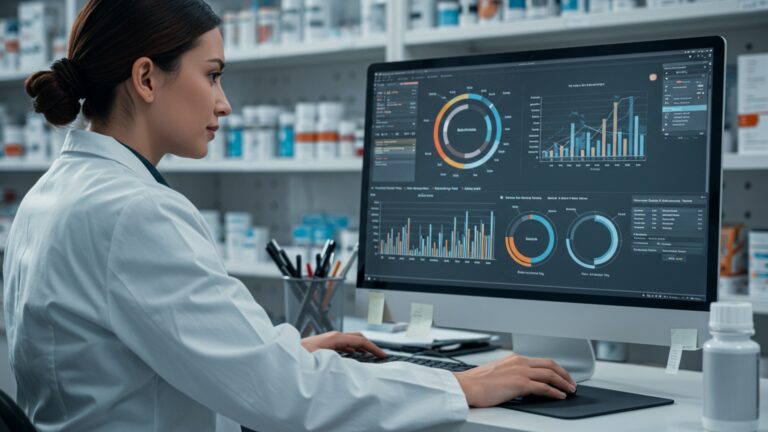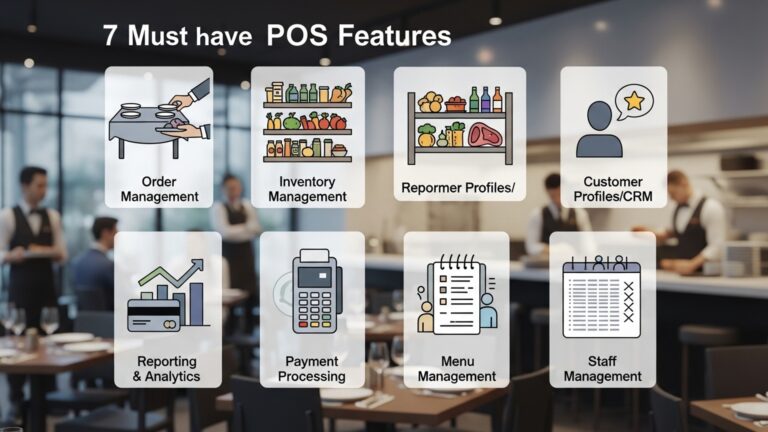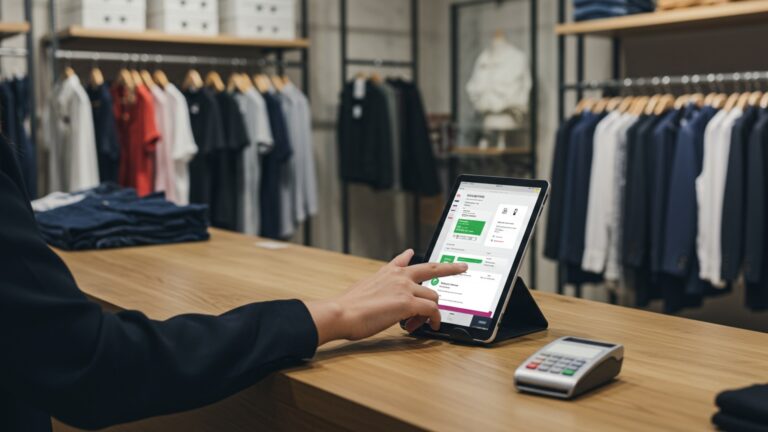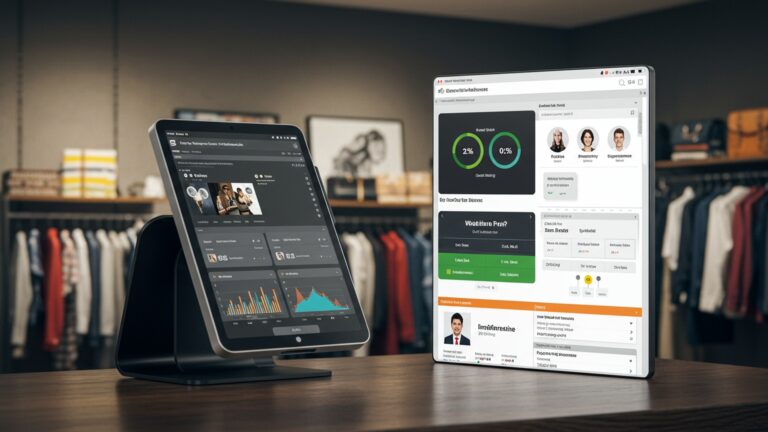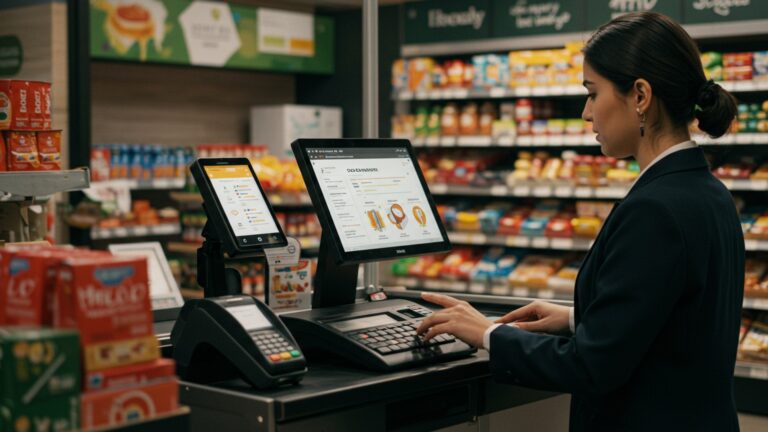Learn 5 Smart Strategies to Master Restaurant POS for Seamless Service
In today’s dynamic hospitality landscape, your restaurant POS software transcends a mere transaction hub; it’s the operational nerve center driving efficiency and guest satisfaction. Mastering its capabilities, from advanced table management and real-time inventory updates to seamless integration with popular online ordering platforms and contactless payment solutions, directly elevates your service delivery. Consider a bustling Friday night: proficient POS utilization ensures accurate order routing to the kitchen display system (KDS), swift bill splitting. personalized loyalty program redemptions, all contributing to quicker table turns and a superior dining experience. This strategic mastery transforms a critical tool into a powerful asset, propelling your restaurant towards unparalleled operational fluidity and customer delight.
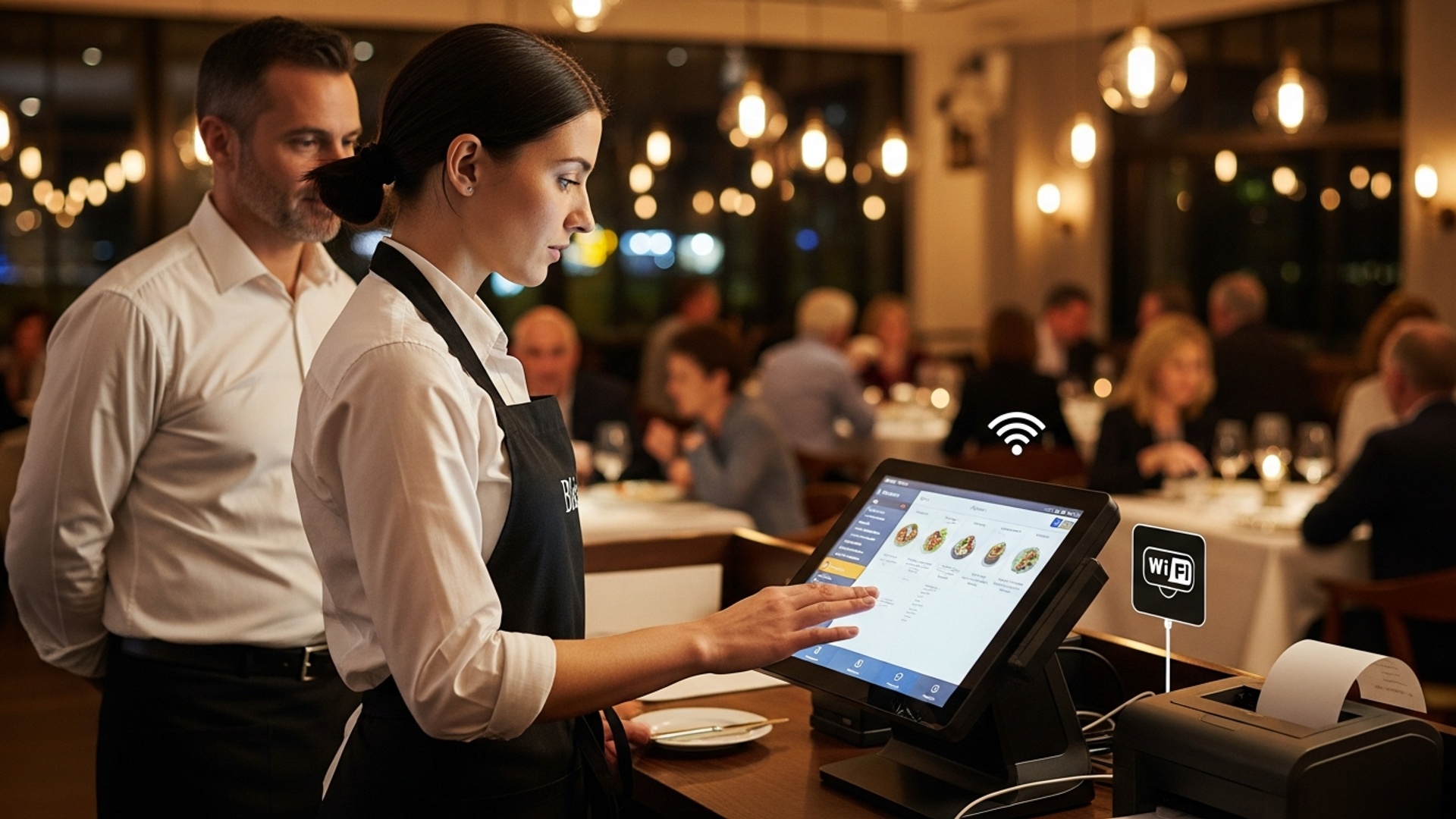
Understanding the Heart of Restaurant Operations: Restaurant POS Software
In today’s fast-paced culinary world, a restaurant’s success hinges not just on delicious food and excellent service. also on the efficiency of its underlying operations. At the core of this efficiency lies the Restaurant POS software – a robust system that goes far beyond simply processing payments. POS, or Point of Sale, software for restaurants is an integrated platform designed to manage all aspects of a dining establishment, from order taking and kitchen communication to inventory management and detailed sales reporting. It’s the central nervous system, connecting front-of-house staff, back-of-house operations. management.
Modern Restaurant POS software typically includes a range of features crucial for seamless service:
- Order Management
- Payment Processing
- Table Management
- Inventory Control
- Customer Relationship Management (CRM)
- Reporting and Analytics
- Employee Management
Taking orders efficiently, customizing items with modifiers, splitting checks. sending orders directly to the kitchen display system (KDS) or printers.
Handling various payment types including cash, credit/debit cards, mobile payments. gift cards, often with integrated EMV compliance.
Visual layouts of dining areas, tracking table status. managing reservations.
Monitoring ingredients, tracking stock levels. generating purchase orders to minimize waste and ensure supply.
Building customer profiles, tracking preferences. managing loyalty programs.
Providing insights into sales trends, peak hours, popular menu items, staff performance. more.
Managing shifts, tracking clock-ins/outs. calculating payroll data.
Mastering this technology is not just about knowing how to press buttons; it’s about strategically leveraging its full capabilities to enhance every facet of your restaurant’s service. Let’s delve into five smart strategies to achieve this mastery.
1. Implement Comprehensive and Ongoing Staff Training
The most sophisticated Restaurant POS software is only as effective as the people using it. Inadequate training is a primary reason for operational bottlenecks, order errors. frustrated staff and customers. To truly master your POS, invest heavily in training that goes beyond the basics.
Front-of-house staff are the direct interface between the customer and the POS system. Their proficiency directly impacts order accuracy, speed of service. the overall customer experience. Back-of-house staff also benefit from understanding how orders flow through the system, especially with integrated KDS.
- Structured Onboarding
- Hands-on Practice
- Ongoing Refreshers
- Troubleshooting Basics
Develop a detailed training manual for new hires, covering every core function of the POS, from logging in and taking orders to processing returns and handling special requests.
Create a ‘training mode’ or a dedicated terminal where staff can practice taking orders, modifying items, splitting bills. processing payments without affecting live sales data. Role-playing scenarios, such as handling a complex allergy order or a group splitting a check multiple ways, are invaluable.
Conduct regular (e. g. , quarterly) refresher training sessions, especially when new features are introduced or common errors are identified. Encourage staff to share tips and best practices with each other.
Empower staff with basic troubleshooting knowledge. For instance, knowing how to restart a printer or check network connectivity can prevent minor issues from escalating into major service disruptions.
Imagine a busy Saturday night. A new server, well-trained on the Restaurant POS software, can quickly input a complex order with multiple modifications and dietary restrictions. The order appears instantly on the KDS, minimizing confusion and ensuring the kitchen gets it right the first time. This reduces stress for the server, the kitchen. most importantly, provides a seamless experience for the diner.
2. Leverage Data Analytics for Informed Decision-Making
Your Restaurant POS software isn’t just a transaction machine; it’s a powerful data analytics engine. Every sale, every void, every hour of operation generates valuable data that, when analyzed, can unlock significant insights to improve profitability and efficiency.
What data can your POS collect?
- Sales Trends
- Menu Item Popularity
- Peak Hours
- Staff Performance
- Inventory Turnover
- Customer Demographics
Daily, weekly, monthly. yearly sales performance.
Best-selling dishes, least popular items. profit margins per item.
Identifying the busiest times of day or week.
Sales per server, average check size. order accuracy.
How quickly ingredients are used.
If integrated with CRM, insights into customer preferences and spending habits.
- Regular Report Review
- Menu Engineering
- Staffing Optimization
- Inventory Control & Waste Reduction
- Targeted Marketing
Schedule weekly or monthly sessions to review key reports generated by your Restaurant POS software. Don’t just glance at the numbers; look for patterns and anomalies.
Use sales data to identify your “stars” (high popularity, high profit) and your “dogs” (low popularity, low profit). This informs menu changes, pricing adjustments. promotional strategies.
review peak hours and sales per server to create more efficient staff schedules, ensuring adequate coverage during busy periods and reducing labor costs during slower times.
By tracking ingredient usage against sales, you can fine-tune purchasing, minimize spoilage. reduce food waste.
Use customer data to create personalized promotions or loyalty rewards, increasing repeat business.
Comparison: Manual vs. POS Analytics
| Feature | Manual Data Tracking | Restaurant POS Software Analytics |
|---|---|---|
| Data Collection | Time-consuming, prone to human error, often incomplete. | Automatic, real-time, comprehensive, accurate. |
| Reporting Speed | Slow, requires manual compilation and calculation. | Instantaneous, customizable reports with visual dashboards. |
| Depth of Insight | Limited to basic totals, difficult to identify complex trends. | Detailed breakdown by item, time, server, payment type; identifies subtle patterns. |
| Actionability | Decisions based on gut feeling or incomplete data. | Data-driven decisions leading to optimized operations and profitability. |
3. Integrate Your POS with Other Essential Systems
A truly seamless service experience extends beyond the single transaction at the counter. Modern Restaurant POS software shines brightest when it’s integrated with other critical restaurant technologies. This creates an interconnected ecosystem that automates tasks, reduces manual errors. provides a holistic view of your operations.
- Online Ordering Platforms
- Kitchen Display Systems (KDS)
- Inventory Management Systems
- Customer Relationship Management (CRM)
- Accounting Software
Whether it’s your own website’s ordering system or third-party delivery apps (e. g. , DoorDash, Uber Eats), integration means online orders flow directly into your POS and then to the kitchen, eliminating the need for staff to manually re-enter orders.
Orders from the POS appear instantly on digital screens in the kitchen, improving communication, reducing paper waste. enabling chefs to manage cooking times more efficiently.
As dishes are sold through the POS, ingredients are automatically deducted from inventory, providing real-time stock levels and triggering low-stock alerts.
Integrations allow you to capture customer details, track their order history, manage loyalty points. personalize marketing efforts directly from the POS.
Daily sales data can automatically sync with accounting platforms (e. g. , QuickBooks), streamlining bookkeeping and reducing manual data entry errors for financial reconciliation.
Consider a customer placing an order through your restaurant’s website. With a fully integrated system, that order appears instantly on your Restaurant POS software, automatically sends to the KDS in the kitchen. simultaneously deducts the used ingredients from your inventory system. When the customer arrives, their payment can be processed quickly. their loyalty points updated, all without a single piece of paper or manual data transfer. This end-to-end automation drastically improves speed, accuracy. customer satisfaction.
4. Customize Your POS for Your Restaurant’s Unique Workflow
No two restaurants are exactly alike. From menu items and service style to floor plans and staff roles, every establishment has its unique rhythm. A powerful Restaurant POS software allows for extensive customization, enabling you to tailor the system to perfectly match your specific operational needs, rather than forcing your operations to fit the software.
- Menu Layout & Modifiers
- Table Layout & Section Management
- User Roles & Permissions
- Payment Options
- Reporting Customization
Organize your digital menu intuitively, with quick access to popular items and clear, logical modifier options (e. g. , “add bacon,” “no onions,” “rare/medium/well-done”). This speeds up order entry and reduces errors.
Design the POS interface to mirror your actual dining room layout. Assign servers to specific sections for efficient table management and order routing.
Define different access levels for staff. For example, servers might have access to order entry and payment processing, while managers have full access to reporting, voids. system settings. This enhances security and accountability.
Configure your POS to accept all relevant payment methods, including specialized gift cards, loyalty points, or even split payments with custom rules.
Tailor reports to focus on the metrics most crucial to your business, whether it’s daily sales breakdowns, ingredient usage, or employee performance.
- Map Your Workflow
- Collaborate with Your Provider
- Iterate and Refine
Before customizing, thoroughly document your current operational workflow. Identify pain points or inefficiencies that the POS can address through customization.
Work closely with your Restaurant POS software provider or their support team to grasp the full range of customization options available. They can often offer best practices based on similar businesses.
Customization isn’t a one-time task. As your menu or operations evolve, revisit your POS settings and make adjustments to ensure it continues to support your business effectively. Gather feedback from staff on usability.
A small cafe might customize its POS with quick buttons for common coffee orders, allowing baristas to process transactions rapidly:
// Example of a simplified POS menu configuration snippet (conceptual)
{ "menu_items": [ { "id": "latte", "name": "Latte", "price": 4. 50, "modifiers": [ {"name": "Milk Type", "options": ["Whole", "Skim", "Oat", "Almond"]}, {"name": "Size", "options": ["Small", "Medium", "Large"]}, {"name": "Add Shot", "price_add": 1. 00} ] }, { "id": "espresso", "name": "Espresso", "price": 3. 00, "modifiers": [] } ], "quick_buttons": ["latte", "espresso", "cappuccino", "muffin"]
}
This kind of tailored setup significantly speeds up order entry, especially during rush hours, directly translating to faster service and happier customers.
5. Prioritize Regular Maintenance, Updates. Security
Just like any critical piece of technology, your Restaurant POS software requires ongoing care and attention to perform optimally. Neglecting maintenance and updates can lead to security vulnerabilities, system slowdowns. missed opportunities for new features that could further enhance your service.
- Security
- Performance
- New Features
- Compliance
POS systems handle sensitive customer payment data. Regular updates patch security vulnerabilities, protecting your business and your customers from data breaches.
Software can accumulate temporary files or encounter minor glitches over time. Updates often include performance enhancements and bug fixes, ensuring your system runs smoothly and quickly.
POS providers frequently release updates that introduce new functionalities, integrations, or improvements based on user feedback and industry trends. Staying updated means you can leverage these advancements.
Payment card industry (PCI) standards and other regulatory requirements evolve. Updates often include necessary changes to maintain compliance.
- Schedule Updates
- Regular Backups
- Hardware Maintenance
- Monitor System Health
- Educate Staff on Security
Work with your Restaurant POS software provider to grasp their update schedule. Plan to install updates during off-peak hours or when the restaurant is closed to minimize disruption.
Ensure your POS data is regularly backed up, ideally to a secure cloud server. This protects your critical sales and inventory data in case of hardware failure or unforeseen issues.
Don’t forget the physical components. Regularly clean touchscreens, printers. card readers. Ensure network connections are stable and reliable.
Pay attention to any unusual slowdowns, error messages, or connectivity issues. Address these promptly with your POS support team.
Remind staff about strong password practices, phishing awareness. the importance of not sharing login credentials.
According to the PCI Security Standards Council, businesses are encouraged to regularly update their systems and software to combat evolving cyber threats. A proactive approach to POS maintenance and security is not just good practice; it’s essential for protecting your business’s reputation and financial health.
Conclusion
Mastering your restaurant POS is truly transformative for achieving seamless service. By diligently applying the strategies discussed, you’re not just processing orders; you’re crafting exceptional customer experiences. For instance, ensuring your staff are proficient in handling complex split checks or integrating a QR code menu for quick ordering directly translates to happier guests and faster table turns, a trend I’ve personally witnessed at my own establishment during the recent shift to digital-first operations. This proactive approach to understanding and leveraging every POS feature, from efficient inventory management to detailed sales analytics, empowers you to make data-driven decisions. Remember, the goal isn’t just speed but precision and personalization. My personal tip? Regularly conduct mini-training refreshers, focusing on new features or common pain points, because even seasoned staff benefit from fine-tuning their skills. Explore how specific features can further boost your profitability by reading more on How to Leverage Restaurant POS Features to Boost Your Business Profit. Ultimately, an optimized POS isn’t just a tool; it’s the backbone of your operational excellence and a powerful driver of customer loyalty in today’s competitive dining landscape. Embrace it. watch your service shine.
More Articles
6 Ways Restaurant POS Improves Customer Service and Efficiency
Avoid These 6 Common Mistakes When Using Restaurant POS Solutions
5 Smart Ways Restaurant POS Software Boosts Your Business Profits
How to Master Restaurant Table Management with a Modern POS System
FAQs
What’s the big deal about mastering our restaurant’s POS system?
Mastering your POS is crucial because it directly impacts service speed, order accuracy. overall customer satisfaction. It helps you manage operations efficiently, reduce errors. ultimately boost your restaurant’s bottom line by streamlining processes.
What kind of strategies are we talking about to get better with POS?
We’re talking about smart approaches like comprehensive staff training, optimizing your POS layout for quick access, leveraging reporting features for business insights, regular system maintenance. integrating with other restaurant tech for a unified workflow.
How do these strategies actually lead to ‘seamless service’?
By having well-trained staff, an intuitive system. reliable tech, you minimize fumbling with orders, speed up transaction times. reduce mistakes. This means faster service, accurate bills. a smoother experience for your guests from start to finish.
My staff struggles with the POS sometimes. Any tips for effective training?
Absolutely! Focus on hands-on practice, provide cheat sheets for less common tasks, offer ongoing refresher courses. create a supportive environment where staff feel comfortable asking questions without judgment. Role-playing scenarios can also be very helpful.
Can mastering the POS really help us make more money?
Definitely. By reducing order errors, speeding up table turnover. allowing staff to upsell more effectively (because they’re not fumbling with the system), you can significantly increase revenue. Plus, accurate reporting helps you identify popular items and manage inventory better, cutting waste.
What’s one common mistake restaurants make with their POS and how can we avoid it?
A very common mistake is inadequate staff training, leading to slow service and errors. To avoid this, invest in thorough, continuous training for all staff, not just new hires. Ensure everyone understands the system’s full capabilities and best practices.
Besides speed, what other benefits come from an optimized POS setup?
Beyond speed, an optimized POS offers benefits like better inventory management, detailed sales analytics to inform business decisions, improved communication between front and back of house. enhanced security for transactions.

